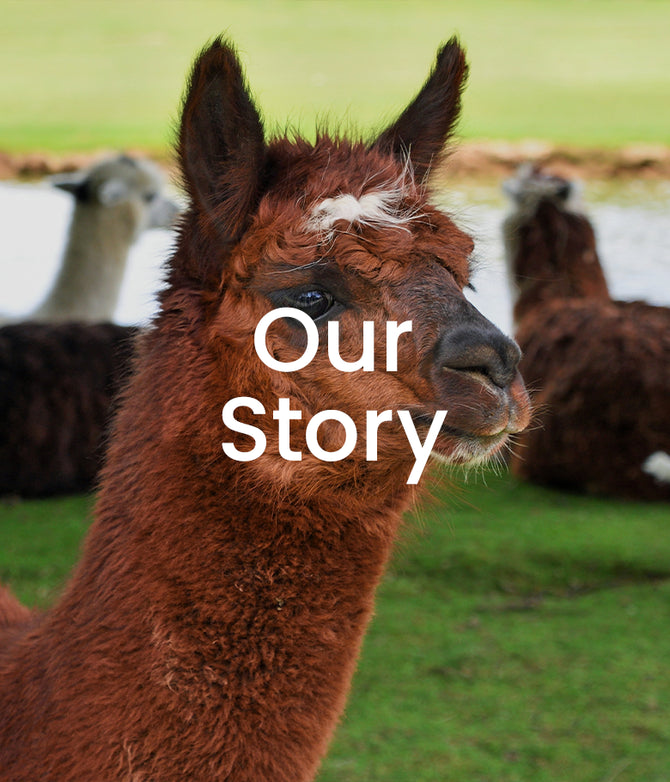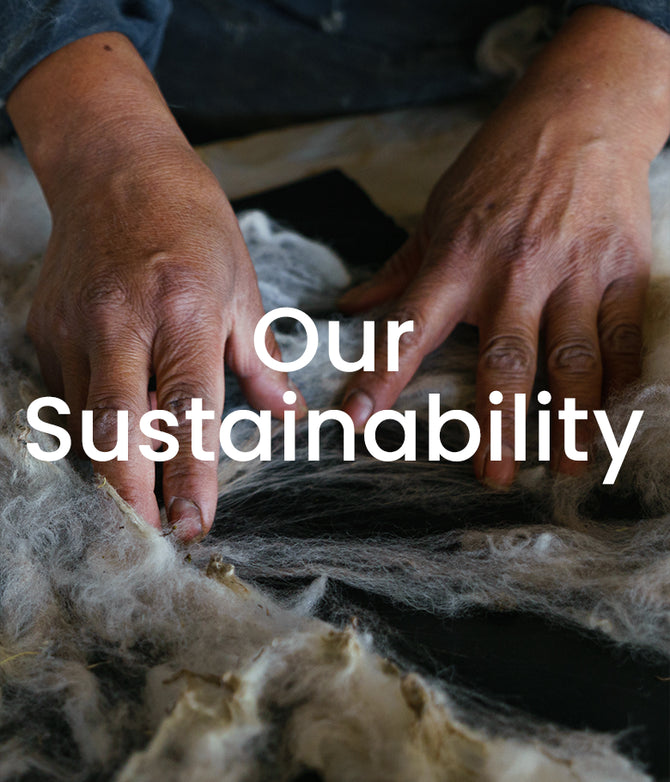Earth Day Every Day:
Lessons from Peru’s Living Landscapes
Published April 22, 2025
1. Say Goodbye to Single-Use Plastics
Single-use plastics are a huge environmental problem, but small tweaks in your daily habits can make a big difference:
- Bring reusable bags: Make or buy groceries and produce bags to use instead of plastic ones. Keep them by the door or in your car so you never forget them.
- Ditch bottled water: Invest in a reusable water bottle [1]. If tap water isn’t safe, boil or filter it instead.
- Carry a reusable coffee cup: Even “eco-friendly” disposable cups create waste if not disposed of properly.
- Pack a zero-waste kit: Include bamboo or metal cutlery, a reusable straw, and a container for takeout. It might take practice, but soon it’ll feel natural.
2. Use Less Water and Energy
Every drop counts, and every watt matters. Here are a few small changes to reduce your footprint:
- Shorten your showers: A quick shower saves both water and energy. Bonus: it’s better for your skin too! [2]
- Turn off the lights: Unplug appliances and switch off lights when you’re not using them [3].
- Hang clothes to dry: Whenever possible, skip the dryer and hang your clothes. It’s gentler on fabrics and the planet.
- Flush smarter: If your toilet has an eco-flush option, use it. No eco-flush? Place a filled bottle in the tank to reduce water per flush.
At Arms of Andes we make our gear from 100% Royal Alpaca Wool of 18-18.5 microns.
3. Make Eco-Conscious Food Choices
Food is one of the easiest ways to live more sustainably:
- Buy local and seasonal: This reduces transportation emissions and supports local farmers [4].
- Cook from scratch: Homemade meals usually come with less packaging and waste.
- Be mindful about meat: Choose ethically raised options, like free-range chicken or grass-fed beef, and support sustainable farming practices. Exploring plant-based meals occasionally can also make a difference [5].
- Opt for sustainable groceries: Shop at packaging-free or bulk stores. No access? Buy in bulk at your regular store to minimize waste.
4. Rethink Your Transportation Habits
How you get around affects your carbon footprint. Start small:
- Walk or bike more: Even once a week can make a difference.
- Use public transport: Replace car trips with bus or train rides when possible [9].
- Carpool: Sharing rides with colleagues or friends reduces emissions.
- Fly less: For shorter trips, consider buses or trains. Offset your carbon emissions for long flights.
5. Choose Sustainable Fashion
The fashion industry is one of the largest polluters, but your wardrobe can make a difference:
- Avoid fast fashion: Look for quality over quantity. Cheaper often means corners were cut in ethics and sustainability.
- Buy second hand: Thrift stores and online resale platforms are great for finding unique, affordable items.
- Support eco-conscious brands: Do your research and choose brands that prioritize sustainability, like Arms of Andes, which uses 100% alpaca wool and natural dyes [6].
- Host clothing swaps: A fun way to give new life to unused items in your closet [7].

6. Upgrade Your Hygiene and Cleaning Habits
Small changes to your personal care and cleaning routines can have a big impact:
- Switch to bamboo* toothbrushes: Look for ones with compostable bristles and packaging.
- Choose steel razors: A durable, waste-free alternative to disposable razors.
- Use natural options: Biodegradable shampoos, soaps, and detergents are better for the planet.
- Use menstrual cups and fabric sanitary towels: They take a little getting used to, but you won’t go back when you do!
- Clean with vinegar and baking soda: These simple ingredients work wonders around the house and are free of harmful chemicals [8].
* When choosing products made from bamboo, try to ensure the bamboo comes from sustainable sources.
7. Embrace Nature and DIY Solutions
Spending time outdoors and trying DIY solutions are both fun and sustainable:
- Grow your own vegetables: Even a small herb garden on a windowsill can make a difference.
- Start composting: Turn food scraps into nutrient-rich compost for your garden. No garden? Check if your city collects food waste.
- Connect with nature: Spending time outside reduces stress and reminds us why protecting the planet matters.
- Join community initiatives: Participate in clean-ups or tree-planting events.
8. Be Mindful About Waste
Rethinking how you handle waste is key to sustainable living:
- Reuse before you recycle: Find new uses for things before throwing them away.
- Donate or swap: Let someone else enjoy what you no longer need.
- Avoid expedited shipping: One-day deliveries often mean more vehicles on the road, increasing emissions.
Sustainable living starts with REDUCING waste, REPAIRING and/or REUSING broken/unused items, before RECYCLING or, when possible, COMPOSTING them.
Why Small Steps Matter
You might think, “Will my tiny changes really help?” The answer is yes. If everyone made just one or two of these adjustments, the collective impact would be enormous. And remember, you don’t have to do everything at once. Pick a couple of these tips to start with, and add more as you go. Before you know it, living sustainably will feel like second nature.
So, are you ready to make 2024 your most sustainable year yet? Small steps today can lead to a greener tomorrow. Let’s get started—one habit at a time!

At Arms of Andes we make our gear from 100% Royal Alpaca Wool of 18-18.5 microns.
Reading time: 4 minutes
By Lesia Tello & Jordy Munarriz
High in the Peruvian Andes, a Quechua elder kneels on the frost-kissed ground at dawn. He places coca leaves on the earth and whispers a prayer to Pachamama–Mother Earth–just like his ancestors did for centuries. In this simple ritual, there is a profound message: taking care of the Earth isn’t reserved for a single date on the calendar. It’s a daily devotion.
As the world celebrates Earth Day each April 22nd, in Peru, the Earth is honored every single day. Across this land of contrasts—from dry coastlines to snowy mountains and deep into the lush Amazon—nature is not just admired, it’s revered. In every corner, Peru’s breathtaking biodiversity is deeply woven with ancient traditions and a living respect for the planet. Together, they offer a powerful reminder: Earth Day, Every Day isn’t just a slogan. It’s a way of life.
Peru: A Land of Many Worlds
Peru is often called a microcosm of the planet for good reason. Even though it’s just one country, it contains almost every type of environment you can imagine. In fact, out of the 32 climates that exist in the world, 28 can be found in Peru [1,2]. Just driving a few hours from Lima’s misty coastline, where lomas (fog-fed oasis hills) bloom green against all odds, you can ascend into icy Andean peaks and then descend into humid Amazonian jungle. It’s said Peru harbors “84 of the 104 ecosystems of the entire planet,” a testament to how nature’s diversity here is virtually unmatched [3,4].

Picture by: Roberto Zuñiga
Emerald valleys tucked between Andean peaks open into wide puna grasslands, where herds of wild vicuñas and alpacas graze under a bright blue sky. Towering above are glaciated mountains–Apus, or sacred spirits, in local belief–that feed rivers rushing down toward the Amazon.
It’s no surprise, then, that Peru is counted among the ten most biologically diverse countries in the world [5]. That means it’s home to thousands of plant and animal species—from giant condors and pink dolphins to orchids, monkeys, and jaguars. In fact, the Tropical Andes are considered the most biodiverse hotspot on Earth [6,7].

Picture by: Galyna Andrushko


6. Upgrade Your Hygiene and Cleaning Habits
Small changes to your personal care and cleaning routines can have a big impact:
- Switch to bamboo* toothbrushes: Look for ones with compostable bristles and packaging.
- Choose steel razors: A durable, waste-free alternative to disposable razors.
- Use natural options: Biodegradable shampoos, soaps, and detergents are better for the planet.
- Use menstrual cups and fabric sanitary towels: They take a little getting used to, but you won’t go back when you do!
- Clean with vinegar and baking soda: These simple ingredients work wonders around the house and are free of harmful chemicals [8].
* When choosing products made from bamboo, try to ensure the bamboo comes from sustainable sources.
7. Embrace Nature and DIY Solutions
Spending time outdoors and trying DIY solutions are both fun and sustainable:
- Grow your own vegetables: Even a small herb garden on a windowsill can make a difference.
- Start composting: Turn food scraps into nutrient-rich compost for your garden. No garden? Check if your city collects food waste.
- Connect with nature: Spending time outside reduces stress and reminds us why protecting the planet matters.
- Join community initiatives: Participate in clean-ups or tree-planting events.
At Arms of Andes we make our gear from 100% Royal Alpaca Wool of 18-18.5 microns.
In Peru’s Amazon jungle, the air is hot and full of life. You hear birds at dawn, see butterflies glowing in sunlit clearings, and walk beneath trees that are hundreds of years old. The forest feels alive. It teaches anyone who visits to slow down and listen. Every plant, every animal, has something to say. People from around the world come here not only to explore but to learn—to connect with nature in a deeper way. In Peru, the land itself is a teacher.

Amazon River - Peru.
Ayni – Ancient Wisdom of Balance
Peru’s land is beautiful, but what makes it truly special is the wisdom of its people.
Long before the word “sustainability” was popular, Andean communities were already living in balance with nature. They call it ayni, a Quechua word that means “sacred reciprocity.” Ayni means giving and receiving. It means helping each other and giving back to the Earth when it gives to you [10,11].

In the highlands, where life can be harsh and the land unforgiving, people have long depended on each other to survive. Since pre-Inca times, the Andean concept of ayni—sacred reciprocity—has guided daily life. No field was planted, no home built, without the help of neighbors. Then, when another family needed support, the favor was returned. This cycle of shared effort created strong communities where what benefits one ultimately benefits all.
But ayni isn’t just about people. This principle of reciprocity extends to Pachamama herself. The Earth gives us everything—water, food, materials, beauty—and so in ayni, people must give thanks and care in return. Offering to Pachamama is one of Peru’s oldest sacred rituals. Even today, in farming villages nestled among terraced hills, you’ll find ceremonies called pagos a la tierra (payments to the Earth) at the start of the sowing season and after the harvest. At these times, families prepare offerings to Pachamama that might include coca leaves, maize, or chicha beer, which are gently buried or burned so that the essence “feeds” the Earth [12].
As one travel chronicler notes, Pachamama “receives offerings at planting and harvesting times in the Andes”, a tradition of gratitude that has persisted despite centuries of change. The Pachamama is not an abstract concept here—she is mother, provider, and protector. In Quechua belief, she inhabits the mountains and valleys, feeling every festival drumbeat and every footstep on her soil. By honoring her, the Andean people affirm a relationship of respect: take care of nature, and nature will take care of you.
At Arms of Andes we make our gear from 100% Royal Alpaca Wool of 18-18.5 microns.
160 UltralightWomen's Alpaca Wool
Hiking T-Shirt
160 Ultralight
Relaxed FitWomen's Alpaca Wool Leggings 300
Lightweight

For snowboarders, skiers, and winter hikers, weight matters. Every gram counts when you're climbing, carrying gear, or navigating the slopes. Alpaca wool’s unique insulation properties allow for lightweight warmth, meaning you stay protected without unnecessary bulk.
Five Reasons to Choose Alpaca Wool for Snow Sports
Alpaca wool is the ultimate base and mid layer material for tackling the demands of skiing and snowboarding. Its unique properties make it an exceptional choice for base and mid layers, ensuring comfort and performance on the slopes.
1. Exceptional Warmth
Alpaca wool fibers feature semi-hollow cores, providing incredible insulation. Combined with their natural crimp (waviness), these fibers trap heat efficiently,
2. Breathable and Moisture-Wicking
One of alpaca wool’s standout qualities is its ability to wick moisture away from your skin while remaining highly breathable. This means you stay dry and comfortable, even during intense physical activity. Alpaca wool base layers, such as leggings and shirts, excel in keeping you warm and sweat-free.
3. Temperature Regulation
Alpaca wool’s unique ability to balance warmth and breathability helps regulate your body temperature. Whether you're racing downhill or waiting for the ski lift, alpaca wool keeps you warm in the cold and prevents overheating during activity.
4. Lightweight and Flexible
Thanks to its excellent insulating properties, alpaca wool keeps you warm without adding bulk. This lightweight quality ensures freedom of movement—crucial for maintaining balance and agility on the slopes.
At Arms of Andes we make our gear from 100% Royal Alpaca Wool of 18-18.5 microns.
Men's Alpaca Wool Jacket
420 Midweight Full-Zip

Relatedcontent
Bamboo:
A fast-growing plant often used for making sustainable products like toothbrushes and cutlery.
Biodegradable:
Materials that can break down naturally without harming the environment.
Bulk stores:
Shops where you can buy products in large quantities, often with minimal packaging.
Carbon footprint:
The total amount of greenhouse gases produced directly or indirectly by human activities.
Composting:
A process where organic waste decomposes into nutrient-rich material for gardening.
Ethically raised:
Livestock or poultry that is raised in humane and environmentally responsible ways.
Fast fashion:
Cheap, mass-produced clothing often linked to environmental and ethical issues.
Natural dyes:
Coloring substances derived from plants, animals, or minerals, used to color fabrics sustainably.
Living Earth Day, Every Day
You don’t need to live in the Andes to live with reverence for the Earth. But when you stand on a quiet mountain trail in Peru—with wind brushing your face and the scent of wild herbs rising from the soil—it becomes clear: the planet is not just a backdrop to our lives. It is a presence. A teacher. A relative.
In Peru, this relationship is alive in every gesture. It’s in the shared work of neighbors rebuilding a trail. In the coca leaves gently placed on the ground before planting. In a fisherman’s whispered thanks to the sea. These aren’t grand acts—they’re daily ones. And that’s what makes them powerful.
This is the spirit of ayni—giving back when you receive, caring as you take. And it’s a mindset we can all carry, wherever we are. Maybe it means walking more, wasting less, or offering help without being asked. Maybe it means pausing to say thank you to the Earth, just once a day.
Because Earth Day isn’t just a celebration. It’s a commitment. A promise renewed with every sunrise and every step we take on this shared ground.
Let’s make that promise again—and live it, every day.

Picture by: Sarai Carrasco

Glossarykeywords
Apu:
A sacred mountain spirit in Andean cosmology, believed to protect and guide surrounding communities.
Chicha:
A traditional fermented corn drink used in rituals and celebrations.
Cloud Forest:
A tropical or subtropical forest that is constantly covered in mist or low clouds. Found in the eastern slopes of the Andes, these forests are rich in unique species and play an important role in water cycles.
Lomas:
Fog-fed hill ecosystems found along Peru’s coastal desert. These rare habitats bloom seasonally and support unique plant and animal life.
Puna grasslands:
High-altitude ecosystems in the Andes, home to unique plants and animals like vicuñas and alpacas. These grasslands play a key role in water regulation and biodiversity.
Sacred Valley:
A fertile region near Cusco, Peru, surrounded by mountains and rich in agricultural terraces and Inca history. It’s considered one of the spiritual and cultural hearts of the Andes.
At Arms of Andes we use the finest Royal Alpaca Wool sourced in the Peruvian Andes. The Andean alpacas naturally developed over thousands of years in harsh conditions in high altitudes, creating the perfect fiber for outdoor gear that helps you stay protected in all conditions. Discover our outdoor apparel.

In the textile industry, companies that produce garments made entirely from Merino wool typically use fibers that are 17.5 microns or finer to minimize any itchiness or roughness, [4] ensuring comfort for their customers. A study conducted by the Division of Dermatology at the University of Louisville in 2019 evaluated the effects of wearing these garments on individuals with skin sensitivities, such as atopic dermatitis or eczema. In the study, 25 participants wore only Merino wool garments of 17.5 microns for six weeks and cotton garments of 21 microns for six weeks more, while another group of 25 followed the reverse order. Participants reported significant changes when switching from cotton to Merino wool, with those who started in Merino wool experiencing a decrease in their eczema during the first weeks. [4]
| Properties | Royal Alpaca Wool | Cashmere | Merino Wool |
|---|---|---|---|
| Weight | Lightest | Light | Heavier |
| Fiber Structure | Semi-Hollow | Solid | Solid |
| Thermal Capacity | 5 x Warmer | 3 x Warmer | Warm |
| Water Retention | Absorbs 10% of weight | Shrinks in water | Absorbs 10%
of weight |
| UV Protection | Yes | Yes | Yes |
| Fiber Scales | Smoothest | Softest | Prickly |
| Microns (average) | 17.5 | 14 | 18 |
| Tensile Strength | Highest | Weak | High |
| Odor Resistance | Yes | Yes | Yes |
| Wrinkle Resistance | Yes | Yes | Yes |
| Hypoallergenic (Lanolin free) | Yes | Yes | No |
The Final Verdict: And the Winner Is...
After a comprehensive analysis of alpaca, merino, and cashmere, it's clear that cashmere, while undeniably luxurious, lacks the durability required for outdoor garments. However, it excels as a high-end fiber for special occasions and elegant attire.
In the head-to-head battle between alpaca and merino, alpaca emerges as the undisputed champion! Alpaca wool surpasses merino in warmth, lightness, softness, and strength. It's the ultimate choice for those seeking performance, comfort, and sustainability.
Authors & Researchers

Lesia tello
Biologist and hiking enthusiast with a deep admiration for nature and the intricate mechanisms of life. With a background in biochemistry and a master’s degree in education, she blends science with adventure, exploring how we interact with the natural world and sharing insights on outdoor experiences.

Jordy Munarriz
Environmental Engineer with a master’s degree in renewable energy and a specialization in sustainability. A passionate traveler and advocate for responsible tourism, he captures the essence of exploration through storytelling, inspiring others to connect with nature in a conscious and meaningful way.
Authors & Researchers

Lesia tello
Biologist and hiking enthusiast with a deep admiration for nature and the intricate mechanisms of life. With a background in biochemistry and a master’s degree in education, she blends science with adventure, exploring how we interact with the natural world and sharing insights on outdoor experiences.

Jordy Munarriz
Environmental Engineer with a master’s degree in renewable energy and a specialization in sustainability. A passionate traveler and advocate for responsible tourism, he captures the essence of exploration through storytelling, inspiring others to connect with nature in a conscious and meaningful way.
Alpaca wool (particularly the royal and baby alpaca fiber grades) is non-itchy, warm, and performs better than merino and other types of sheep's wool. This makes alpaca wool perfect for your outdoor clothing, slipper socks, and even underwear.

Glossarykeywords
Apu:
A sacred mountain spirit in Andean cosmology, believed to protect and guide surrounding communities.
Chicha:
A traditional fermented corn drink used in rituals and celebrations.
Cloud Forest:
A tropical or subtropical forest that is constantly covered in mist or low clouds. Found in the eastern slopes of the Andes, these forests are rich in unique species and play an important role in water cycles.
Lomas:
Fog-fed hill ecosystems found along Peru’s coastal desert. These rare habitats bloom seasonally and support unique plant and animal life.
Puna grasslands:
High-altitude ecosystems in the Andes, home to unique plants and animals like vicuñas and alpacas. These grasslands play a key role in water regulation and biodiversity.
Sacred Valley:
A fertile region near Cusco, Peru, surrounded by mountains and rich in agricultural terraces and Inca history. It’s considered one of the spiritual and cultural hearts of the Andes.
References:
[1] Thornthwaite, C. W. (1933). The climates of the earth. Geographical Review, 23(3), 433-440.
[2] Málaga, E. (2004). Perú: informe anual 2004. El Censo Neotropical de Aves Acuáticas, 83-86.
[3] Ministerio del Ambiente (MINAM). (2010). Guía de Evaluación de la Fauna Silvestre. Lima, Perú.
[4] Tito, R., Salinas, N., Cosio, E. G., Espinoza, T. E. B., Muñiz, J. G., Aragón, S., ... & Roman-Cuesta, R. M. (2022). Secondary forests in Peru: differential provision of ecosystem services compared to other post-deforestation forest transitions. Ecology and Society, 27(3). https://doi.org/10.5751/ES-13446-270312
[5] Schuler, I., & de Jaramillo, E. H. (2011). The potential of biodiversity in the Andean region: Use, conservation and regulations. Biological Diversity and Sustainable Resources Use, 77.
[6] Myers, N., Mittermeier, R. A., Mittermeier, C. G., Da Fonseca, G. A., & Kent, J. (2000). Biodiversity hotspots for conservation priorities. Nature, 403(6772), 853-858.
[7] Critical Ecosystem Partnership Fund. (s. f.). Tropical Andes. https://www.cepf.net/our-work/biodiversity-hotspots/tropical-andes
[8] Ministerio del Ambiente [Minam]. (2019). Sexto informe nacional sobre diversidad biológica. La biodiversidad en cifras. Recuperado de https://cdn.www.gob.pe/uploads/document/file/360831/La_Biodiversidad_en_Cifras_final.pdf
[9] Informática (Peru). (2019). Anuario de estadísticas ambientales. Instituto Nacional de Estadística e Informática. https://www.inei.gob.pe/media/MenuRecursivo/publicaciones_digitales/Est/Lib1704/libro.pdf
[10] Smithsonian National Museum of the American Indian. (s. f.). Reciprocity—Andean Style and in Your Community. https://americanindian.si.edu/nk360/inka-water/reciprocity/reciprocity
[11] Kuokkanen, R. (2011). Indigenous economies, theories of subsistence, and women: Exploring the social economy model for Indigenous governance. American Indian Quarterly, 35(2), 215-240.
[12] Paponnet-Cantat, C. (1996). Deathly Waters and Hungry Mountains: Agrarian Ritual and Class Formation in an Andean Town. The Canadian Review of Sociology and Anthropology, 33(2), 242+. https://link.gale.com/apps/doc/A18585438/AONE?u=anon~953440e5&sid=googleScholar&xid=fb63652a






















